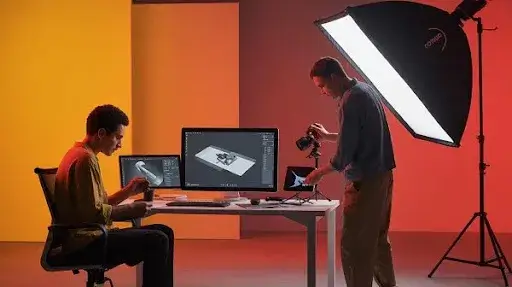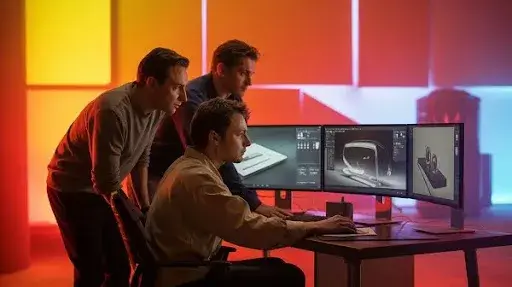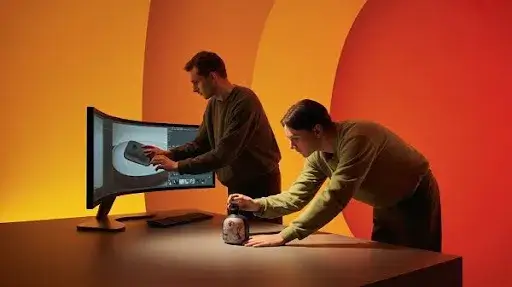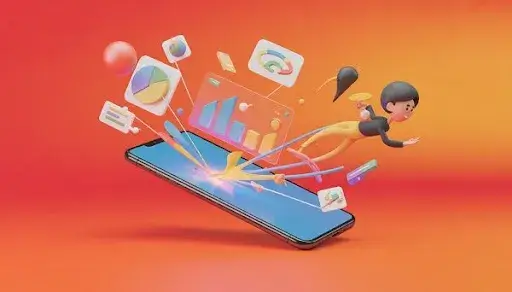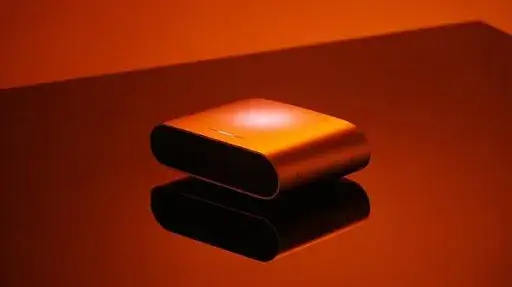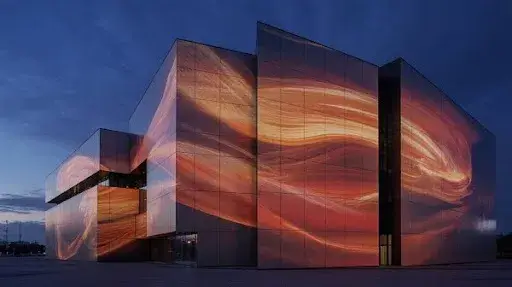A product can be impressive, but if the visuals fall flat, the audience scrolls past without hesitation. Brands that sell online don’t just need good photos; they need content that adapts, scales, and stays consistent across every platform. That’s where the debate of 3D rendering vs. product photography stops being theoretical and becomes a real business decision.
High production costs, limited content output, and endless reshoots have pushed many brands to look beyond traditional photography. At the same time, not every product needs a digital twin or a custom model built from scratch. The real challenge is figuring out which approach gives the best return without sacrificing quality, accuracy, or speed.
This blog explores the comparisons that actually matter: pricing, scalability, content demands, visual consistency, timelines, technical accuracy, and long-term usability. Instead of romanticizing photography or hyping 3D models, the goal is to look at how brands can maximize output with minimal waste.
Product Photography vs 3D Rendering: The Core Comparison
Both methods aim to sell the product visually, but they operate on completely different rules. Traditional photography depends on physical setups, lights, cameras, lenses, samples, studio space, and people. 3D rendering relies on digital modeling, texturing, virtual lighting, and rendering software.
The gap between the two becomes more obvious as content demands pile up. A brand with five SKUs might manage photography without an issue. A brand with 200 products, seasonal drops, and ongoing campaigns starts feeling the drag almost instantly.
Here are the key pressure points that push brands to compare product photography vs 3D rendering more seriously.
Cost Comparison: Product Photography vs 3D Renders
Studio rentals, photographers, retouching, props, packaging prep, and physical samples add up quickly. Even a small shoot involves coordination, scheduling, and revisions. Each new angle, colorway, or background is another line item.
A 3D render requires an initial investment in modeling, but once that model exists, there’s no limit to how many visuals it can generate. There’s no need for re-shoots, new locations, or shipping samples. Updating a label or changing a texture doesn’t involve calling a crew back in. This is where custom product animation services come in play.
For brands that need product visuals across catalogs, ads, marketplaces, email campaigns, and social media, cost-effective product visuals are easier to achieve through digital assets. The upfront cost pays off once content volume increases.
Speed of Production vs Photography Time
A photoshoot is limited by availability, approvals, setup, lighting, staging, and editing. Even fast teams can’t bypass the fact that physical production takes time.
A render can be updated overnight; new angles, lighting setups, close-ups, environment changes, and shadows can be adjusted instantly. For product launches with tight timelines or multiple variations, the speed of production vs photography time isn’t even a competition.
This is why brands with frequent seasonal launches or rotating collections are moving toward realistic product visuals without a photoshoot.
Product Rendering Benefits That Photography Can’t Match
After one 3D model is built, it becomes a reusable asset with no expiration. Every small tweak can generate content for ads, websites, packaging, AR experiences, and presentations without revisiting the original setup.
Here are some of the most impactful product rendering benefits for eCommerce and marketing teams:
- Asset variability and infinite variations, swap colors, create bundles, rotate angles, or test different finishes instantly.
- No limits on lighting and shadow control, scenes can be bright, moody, reflective, or textured without hauling equipment.
- Easy post-production, edits don’t degrade quality and don’t depend on retouchers.
- Perfect alignment with branding goals, consistent scenes, framing, and tones across all products.
Traditional photography reaches a wall the moment changes are needed. Once the shoot is done, there is no going back without spending more.
Photorealistic 3D Rendering and Texture Realism
Years ago, 3D visuals looked artificial. Now, photorealistic 3D rendering replicates surface reflections, transparency, shadows, matte coatings, metals, glass refractions, and fabric textures with absurd accuracy. The difference between texture realism in 3D rendering vs photography is barely noticeable when done right.
Lighting plays a huge role. In a studio, adjusting lighting setups costs time and money. In rendering, lighting and texture in rendering can be explored in endless combinations without the need for reshoots.
Brands selling cosmetics, electronics, packaged foods, furniture, and consumer products increasingly rely on digital models because they can produce visuals that look real but require zero physical handling.
Scalability in Visuals and Content Output
Content needs have evolved. One photo of a product on a white background is no longer enough. Brands now need:
- Hero shots for sites
- Zoomed-in details for marketplaces
- Lifestyle setups for ads
- Seasonal versions for campaigns
- 360-degree views
- AR try-on experiences
- Animated explainers
- Variant swaps based on demand
Photography struggles to keep up with this. Every new need requires a logistics reset.
In contrast, scalability in visuals is built into 3D rendering. Once a brand has a digital catalog, new formats are just outputs, not separate projects.
This is a major factor for companies that want visual consistency across product catalogs. One lighting setup can apply to every SKU automatically.
When to Choose 3D Rendering Over Product Photography
Not every brand is ready to switch fully, but certain use cases make the decision obvious. Here are common signals that point to the advantages of rendering:
- Products with frequent color or label changes
- SKUs with reflective, transparent, or complex surfaces
- Situations where shipping samples is expensive or slow
- Teams that need visuals before the final product is manufactured
- Collections that update seasonally
- Marketing teams planning multiple campaigns ahead of time
- Businesses using custom environments or stylized branding
Brands with large catalogs gain the most from cost-effective product visuals because the initial model investment gives returns across years.
How 3D Rendering Improves Marketing Visuals
Modern marketing doesn’t rely on a handful of static product shots anymore. TikTok, Amazon, Instagram, YouTube, and paid ads all need customized content in different dimensions and tones.
Rendering allows every product to be re-styled as campaigns evolve. Brands can run localized ads, test colors, update packaging versions, and build mockups for trade shows without waiting for new shipments.
How 3D rendering improves marketing visuals comes down to flexibility and reliability. No damaged samples, no breakage during transit, no lighting mismatches between shoots, and no rescheduling.
Photo Authenticity vs Render Perfection
Photography gives authenticity through real reflections, shadows, and imperfections. That can be useful for products meant to feel handmade, natural, or raw.
Renders excel in precision. No scratches, no lighting flaws, no label misalignment. This level of detail is useful for electronics, luxury goods, FMCG packaging, supplements, and high-end cosmetics.
The decision isn’t about realism; both options can show realism. It’s about control. Some products look better polished. Others need a handcrafted tone. The balance between photo authenticity vs render perfection depends on the brand identity and audience expectations.
Pros and Cons of Product Photography and Rendering
Here’s a straight look at the trade-offs without sugarcoating:
Product Photography Advantages:
- Authentic textures and organic lighting
- Quick setup for a small number of SKUs
- No modeling required
- Useful if the product has unique imperfections that add appeal
Product Photography Drawbacks:
- Limited scalability
- Expensive reshoots for new colors or angles
- Physical storage and shipping requirements
- Post-production piles up fast
3D Rendering Advantages:
- Endless reuse after one model is made
- Fast updates and recolors
- High precision for technical products
- Ideal for seasonal or segmented marketing
- Supports animation, 360 views, and AR
3D Rendering Drawbacks:
- Needs a skilled artist or studio
- Initial setup cost feels high for small catalogs
- Some audiences still view photos as more “real”
Using 3D Renders for Seasonal Product Variations
Holiday packaging, summer editions, limited drops, and event-based campaigns usually require staged photoshoots. That adds cost, delays, and storage planning.
With rendering, seasonal changes can be produced quickly and tested across multiple layouts. Using 3D renders for seasonal product variations allows brands to react faster to trends instead of planning months ahead.
For industries that rely on constant product refreshes, snacks, skincare, beverages, fashion accessories, digital models reduce waste and keep visual campaigns on schedule.
Post-Production Editing: Photography vs 3D Rendering
Correcting lighting flaws, masking backgrounds, cleaning reflections, and fixing fingerprints is part of every photo workflow. Post-production can take hours per product shot, and results vary across editors.
In 3D, there’s no limit to revisions. Want to change the scene from studio white to a matte backdrop? Done. Add condensation to a soda can? Done. Switch label colors? Immediate. Post-production editing: photography vs 3D rendering is no contest in speed or cost once the model exists.
FAQs on 3D Rendering vs Product Photography
Is 3D rendering more cost-effective than photography?
Yes. Photography adds cost every time a variation or revision is needed. Renders require a model once, then produce as many visuals as needed without new shoots.
Can renders really look as real as photos?
Modern photorealistic 3D rendering mimics lighting, shadows, reflections, and materials with impressive accuracy. In finished format, most viewers can’t tell the difference.
What industries benefit the most from rendering?
Cosmetics, electronics, supplements, packaged foods, furniture, lifestyle accessories, and any business with eCommerce listings or frequent updates benefit significantly.
Do renders work for social media ads and catalogs?
Yes. They can be exported for lifestyle imagery, white background shots, 360s, and seasonal campaigns in any size or ratio.
Is photography still useful in some cases?
Definitely. Handmade pieces, draped fabrics, and craft items often look better when captured physically.
How long does it take to create a render?
Building the first model takes some effort, but updates and exports are fast. Recolors, lighting tweaks, and different views can be done immediately.
Can 3D rendering support product animations?
Yes. The same asset can be used to create motion graphics without planning physical shoots.
Is it possible to use renders before production starts?
That’s one of the main advantages. Preorders, ads, and product listings can go live before samples exist.
What about texture and material accuracy?
Texture realism in 3D rendering vs photography is no longer a trade-off. Materials like plastic, glass, fabric, metal, and liquid can be recreated with precision.
How do brands manage large catalogs with rendering?
They create reusable models and maintain consistent lighting and templates. Updates don’t involve reshooting, which speeds up the entire process.
Final Words
The conversation around 3D rendering vs product photography isn’t about dismissing one. It’s about using the option that offers the most control, reuse, and output over time.
Photography still belongs in scenarios where human interaction, craft details, or natural elements matter. But when brands deal with large catalogs, seasonal updates, tight timelines, or pre-manufacturing marketing, rendering solves problems traditional shoots can’t.
A single reusable model replaces the need for repeat setups. Lighting stays consistent. Updates take hours, not weeks. Costs drop as output scales.
Brands growing quickly aren’t guessing; they’re replacing slow workflows with flexible ones that meet modern content demands. For teams selling online or planning launches ahead of production, the smarter choice isn’t what feels traditional. It’s what will still work a year from now.
If the goal is to produce more visuals with less friction and stay ready for every campaign, photorealistic 3D rendering delivers exactly that.
Get in touch with Prolific Studio, one of the best animation studios in Atlanta, and receive high-quality animation services today.
Related Articles:

